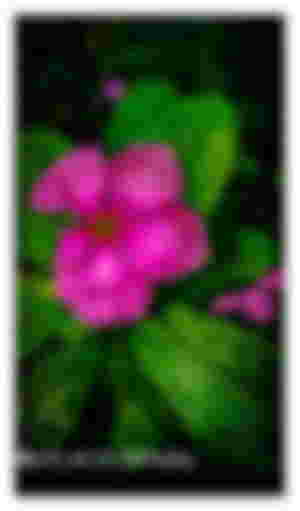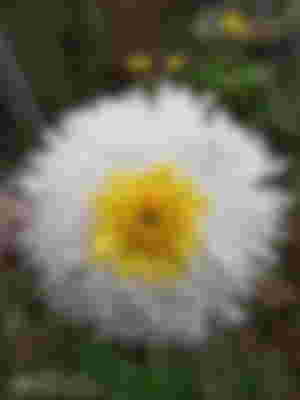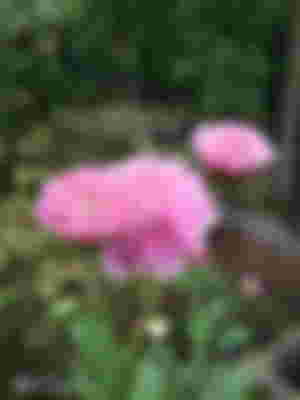
Novel: Introduction A, Concept and Definition of Novel A novel is a type of story written in prose. People love to tell stories. It has been around since ancient times. People used to tell stories by word of mouth. There was no way to write. Later, the novel appeared in the same series. However, the novel is not just a visual story, it is a kind of creative writing. Human life is the source of the novel. Authors write novels by mixing their own thoughts and imaginations with the events that take place in this life. In the novel, therefore, we find the expression of the novelist's life experience. In this way the novel has become a kind of creative composition. When people learn to write, then the novel appears. Storytellers became extinct after the advent of printing press in the fifteenth century.
The period of modern novels begins. This modern novel first originated in Europe, then spread all over the world. Began writing modern novels. As I said at the beginning, there is a main story in the novel. There may be some more sideways to average this story. As a result, the size of the novel is usually not short, nor is it a very short story. However, literary theorists have not been able to agree on the size of the story and whether it will resort to side-story to build the original story.
In his Aspects of the Novel, E. M. Foster states that the novel is a prose of a certain extent. Speaking of this size, he said that the word count of the novel should be at least twenty five thousand. Foster did not say what the maximum number would be. The words of a novel (In Search of Lost Time) written by the famous French novelist Marcel Prast are about twelve lakhs.

This is the biggest novel ever written in the world. The number of words in Lev Tolstoy's War and Peace is also many - five hundred and eighty-seven thousand. The famous Italian aestheticist and novelist Umberto Echo has once again claimed that a seven-word text is the shortest novel in the world. Literary theorists could not agree on not only the size but also the nature or features of the novel.
Literary theorists have chosen different ways of expressing themselves individually on how the story will be presented, what the subject matter will be, what the style of the language will be. But despite these differences, there are some similarities. Due to some of these common features, the novel has become a special kind of creative work. For example, the story that the novelist creates is based on narration.
Through prose and dialogue. This description of the novel is called 'Narrative'. The story is neatly presented in the novel. The word 'novel' used in Bengali also mentions this format. Nass has been associated with the prefix 'sub'. This nass is the format. The Sanskrit etymology of this word used in Bengali is as follows: sub + ni + as + a = novel.
It has two synonyms in English: Novel, Fiction The word novel comes from the Italian novella. It means: ale (story) or story. The source of fiction is fact. Forma-1, Bangla Sahapatha-9th-10th class
Some Definitions of Bengali Co-Reading Novel It is not easy to define a novel as a special form of literature. There are differences of opinion about its size and nature. As a result, it is difficult to define a specific angle. However, the definitions of the novel based on some of its general features are as follows:

A novel is a descriptive work of art in which the author's personal life - philosophy and life experience are embodied in a real story. [Novel ', Sahitya-Sandarshan, Srishchandra Das, Kathakali, Dhaka, 198. Novel is a special type of literature in English. A long descriptive literary work written in prose. [Novel ', Literary Dictionary, Survi Bandyopadhyay, West Bengal Bangla Academy, Calcutta, 1999, p. 29. ]
An invented prose narrative of considerable length and certain complexity that deals imaginatively with human experience, usually through a connected sequence of events involving a group of persons in a specific setting, is called a novel [The Britannica Guide to Literary Elements. Prose Literary Terms and Concepts, Ed. by Kathleen Kuiper, Britannica Educational Publishing. New York, 2012, p. 1.] The term "novel"
is now applied to a great variety of writings that have in common only the attribute of being extended works of fiction written in prose. ["Novel ', A Glossary of Literary Terms (9th Edition), MH Abrams and Geoffrey Galt Harpham, Wadsworth Cengage Learning, Boston, 2009, p. 226.) Reviewing the history of literature, it can be seen that the novel is a relatively modern creation. Poetry, epics, narratives were first created as the earliest forms of literature.
As the novel unfolds, the writers take refuge in the story from their own words, the words of the people around them, and the urge to speak about the society. From the seventeenth-century Spanish novelist Cervantes to Don Quihata, the novelist has reached this point in modern times. The aspect of the structure and structure of the novel.
The elements on which the novel has generally developed through various practices over a period of about four hundred years are as follows: 1, story or plot 2, character 3, scene or setting 4. Narrative method, 5. Language (diction) and ৬, Author's philosophy. 2023

The main element of a Bengali co-reading novel is its story. This story can be simple, complex again. In auditory novels. As can be seen, the predominance of the story is not so much. Language or manner of speaking becomes the main thing.
This is how an absurd novel or a French nouveau novel is written. However, in general, the story of a novel is averaged with the help of six short stories or sub-stories. This story presented in the novel is called plot or story - the whole. The second element of the novel is the character. The novel is formed through the behavior of the characters. Novels have one or more characters.
Which of these will be the main character, or whether there will be a main character at all, depends on the novelist. The story of the novel continues to unfold through the events that take place in the characters. The story of the novel also develops through the development of character.
The novel moves on to the consequences. The novel is the story of this evolving character from beginning to end. Another element of the novel is its various scenes or environments. The novelist builds the story of the novel by combining the scenes or the environment in different pieces. This environment is built on the nature of the character's attitudes and behaviors. Narrative is another element of the novel.
The scenes, environments or stories we find in the novel are constructed with different styles. Somewhere the character tells his own story in his own language, somewhere he tells the story of a novelist. Somewhere there is only information, somewhere the novel is built on the structure of the story in emotional poetic language.
From that point of view, language is the most important element of the novel. Because, novels are written through language. Everything is described in language. Special special environment is created. Without proper language in the right place, it becomes a novel. However, everything in the novel is controlled by the author's life philosophy.
The author's words are his life philosophy. In the end, we see this life philosophy reflected in the story of a novel. Overall, the novel is written with all the elements mentioned. C. Brief introduction of Bengali novels I have already said that novels are the creation of modern times. Novel writing in the form of English novels began in Bengali literature only one and a half hundred years ago. However, many have found its seeds in ancient Sanskrit stories - poetry, Panchatantra and Buddhist birth stories,
medieval fairy tales, Mymensingh lyric, romantic stories - poetry, Nath literature, Mangalkavya, Arabic novels, Lakegatha, etc. Seen in this way, no pattern can be found in any corner of Bengali novels before modern times. But with the onset of British rule, Calcutta became the center of massive urbanization on the one hand, and the emergence of the middle class on the other. The influence of European education increased humanity,
individualism, the spread of education and periodicals, social awareness, and so on. Society is becoming more and more complex by people of different classes and professions. The people of the new age feel the need to express the new society. This is the effect of the novel. Many believe that the description of Fulmoni and Karuna (1852) by Hannah Catherine Mullens (1828-61) is the first novel in Bengali literature.
Some have again found traces of the novel in Dulal (1857) of Alal's house in Parichand Mitra. However, everyone agrees that Bankimchandra Chattopadhyay's (1838-94) Durgesh Nandini (185) is the osos.

8 Bangla Sahapatha is the first successful novel in Bengali literature. Bankimchandra is actually the creator of modern Bengali novels. All the signs of the novel can be seen in his novel. He has written historical novels. Wrote social novels. The various inconsistencies of the society, the desires, aspirations, pains and conflicts of the individual are beautifully revealed in his novel.
He has also shown success in storytelling, characterization, language, etc. His notable novels include Kapalakula, Bisabriksha, Krishnakant's Will etc. Another famous author of Bengali novels was Rabindranath Tagore . He was a man of many talents. His success in writing novels is also enviable. Rabindranath has written in his novels with a wonderful combination of mind and thinking of a person. In Bankim's novel we see that under the pressure of society,
a person could not become self-sufficient. His umbrellas have suffered immensely. On the other hand, new age women and men were found in Rabindranath's novel. Baptized by humanity, they are denying social reform. Women and men have equal rights. Self-esteem wants to achieve on the basis. Inspired by patriotism, they want an end to the colonial rule. Notable in Rabindranath's novels in terms of storytelling, character portrayal, language observation, reflection of the age, psychoanalysis etc.
The most talked about novels written by him are Sand of the Eyes, Gera, Outside the House, Four Chapters and Yayagayage. After Rabindranath, Sarat Chandra Chattopadhyay (18-1937) wrote a novel based on the homelessness of the Bengalis and the abhorrent family sentiments. Gained enviable popularity. His notable novels are Characterless, Grihadah, Devdas, Dena-Paona, Srikanta etc. Then came the world of Bengali novels by three Banerjee-Tarashankar Banerjee
Bibhutibhushan Banerjee and Manik Banerjee The natural beauty of the abominable Bengal, the gentle serenity of the countryside, the forests, the mountains that control our lives now, can be understood by reading his novels Pather Panchali, Aparajita, Aranyaka etc. In Tarashankar's novel, we find the loss of past glory and wealth of the zamindars, the common people of the lower class diverse professions. These people are our famous Vaishnavites, poets, travelers, potters, Vedas, snakes, magicians, dancers of Jhumur group and so on. Pictures of the lives of emerging industrialists and workers can also be found in his novels.

His notable novels are: Ganadevata, Panchagram, Dhatridevata, Hasuli Banker Upkatha, Kabi etc. The two main features of Manik Bandyopadhyay's novel are: (1) the rich-poor conflict in the background of Marxism and (2) the complex relationship between men and women in the light of Freudian psychoanalysis. The picture of the life of the people oppressed by the colonial rule is bright in his novel. With that can be found the image of rural reality. His famous novels are Dibaratri's Kavya, Padmanadir Majhi, Puppet Dance Itikatha, Chihan, Shahartali etc.
Other notable people who have become famous for writing Bengali novels are: Jagadish Gupta, Satinath Bhaduri, Kamalkumar Majumder, Debesh Roy, Mahasweta Devi, Sunil Gangopadhyay, Shirshendu Mukhepadhyay and others. D, A Brief Introduction to Bangladeshi Novels In 1947, India became politically divided. A new socio-political situation began in East Bengal. This is when the journey of Bangladeshi novels began. Until the independence of Bangladesh in 1971, this region was a colony of Pakistan. Despite the emergence of civic life centered on Dhaka, rural life 7
Bengali class was the same. People's lives were endangered by the conflict between rich and poor, rural prejudice, poverty, etc. Bangladesh gained independence in 1971. New stimuli appeared in the national life. Just as the touch of modernity was felt in public life, so was the tension in rural life. Against this background, Bangladeshi novelists have written various types of novels.
If classified, Bangladeshi novels can be arranged in this way. (1) Novels written in rural background: Syed Waliullah's Lalsalu, Kando Nadi Kando, Moon's New Moon, Abu Ishaq's Surya-Dighal Bari, Zahir Raihan's Thousand Years, Abdul Ghaffar Chowdhury's Chandradwip's Legend, Shawkat Osman's Ajnaz, , Syed Shamsul Haque's Paran Master in Space, Selina Hassan's Dipanbita etc.

(2) Novels written in the background of town and village: Alauddin Al Azad's Hunger and Hope, Shahidullah Kaiser's Secretary, Sardar Zain Uddin's Many Sun Hope, Abul Fazl's Rangaprabhat, Anaar Pasha's Neer Sandhani etc. (3) Novels written against the backdrop of urban life: Abul Fazl's Life Path Traveler, Rashid Karim's Good Man and Love is a Red Gallop, New Day in Front of Abu Rushd, Akhtaruzzaman Elias's Attic Sepai, Shawkat Ali's Deccan Day etc.
(4) Regional and special life style novels: Alauddin Al Azad's Karnafuli, Shahidullah Kaiser's Sareng Bou, Shamsuddin Abul Kalam's Kasban's daughter, Abu Ishaq's Padma Pol, Sardar Zainuddin's Pannamati, Shawkat Ali's Pradekse. (5) Psychology and philosophical novels: Alauddin Al Azad's oil painting number 23, Syed Shamsul Haque's wall country and a picture of a woman, Shawkat Ali's Pingal Akash,
Mahmudul Haque's playhouse etc. (6) Historical and Liberation War based novels: Abu Jafar Shamsuddin's Legend of Bhawal Garh and Padma Meghna Jamuna, Legends of Shamsuddin Abul Kalam's Alam Garh, Satyen Sen's Cursed City, Jawaharlal Nehru Amar Baen, Hasan Azizul Haque's Widows, Selina Hassan's Shark River Grenade and Gayatri Sandhya, Humayun Ahmed's Parashamani of Fire, Jyotsna and Janani's Story, Walls etc.
Apart from this division, the novelists of Bangladesh have written novels focusing on various issues of different ages. As a result, they wrote novels for adults as well as for children. All in all, Bangladeshi novels have developed in various genres. The life of rural people and urban life, personal struggle and ethnic struggle, history and politics - everything has found a place in the novel of Bangladesh.
The novelists of Bangladesh have shown success in many aspects like characterization, language, narrative style etc. E. Kaktaruya Novel and Novelist Introduction: Selina Hassan Selina Hassan was born on 14 June 1947 in Rajshahi. His father's name was Mesharaf Hassan, his mother's name was Mariamnesa Bakul. He is the fourth child of the parents.
He started writing while studying at Rajshahi University in the 1980s. So far, he has published thirty-three novels for adults and twenty-five for adults. The world of Selina Hassan's writing is the people of Bangladesh, its culture and tradition. His novel reflects the totality of contemporary social and political conflicts and crises. The language of Bengali arrogance - the movement and the context of the liberation war

Bengali classroom writing has reached a new level. Many of his stories and novels have been translated into English, Russian, French, Hindi, Japanese, Korean, Finnish, Urdu, Arabic, Malay, Malayalam etc. His novels have been included in the syllabus of several foreign universities. His notable novels include: Shark River Grenade, Peacock's Habitat, Blue Peacock's Youth, Gayatri Evening, Full Picture Immersion, Jamuna River Mushayera, Land and Kusum. He has received Ekushey Padak, Bangla Academy Sahitya Puraskar and all the major awards of the country.
The Surma Chowdhury International Memorial Award (India) has received international recognition. In 2010, Rabindranath Tagore University in Calcutta conferred on him the honorary degree of Delete. In his career he was the director of Bangla Academy. In 2016, he received the Independence Award.
Now she is working full time on writing, women's development and human rights. Discussion of the novel: Kaktaruya is a village in the corner of Bangladesh. Mercury of this village is one of them. There is no one in the three clans except one aunt and uncle Bain Kunti. But even if not today, there was a day. That was a couple of years ago.
In addition to parents, there were two sisters and one brother. The sixth Bain Vishnu was one and a half years old. There was a brother Taleb and Bain Shilu. He had a good time with these brothers and sisters. But it all ended overnight. Everyone died of cholera. Luckily, Mercury survived. Shelter was first found at her aunt's house.
But when it comes to poverty, Budha leaves the house. Mercury alone since then. Spend the night wherever happy. Do whatever pleases you. When whatever is in the alliance, so be it. The whole village and the hatbazar became his roaming area. All the people he knew became his relatives.
Thus day goes, day comes. But one day the military entered the village. The shops of the market were burnt down. Mercury wondered, why did the military do that? What is the crime of the people of Bangladesh? He is very angry.
I thought, it needs to be remedied. Revenge needs to be taken. He had no difficulty in understanding that the war of liberation had begun. But he did not know what the liberation war was. But it was understood that those militaries were foreigners. Not the people of Bangladesh.
It is important to fight against them. Not only these, but also those who are helping them have to fight against them. According to others, he will not run away from the village. But he is very young, how to fight? One night freedom fighters Ali and Mithu came to the village in the dark of night.
Budha was told that the school's military camp should be blown up. Mercury got involved in the liberation war. First, the house of Ahad Munshi, the chairman of the peace committee, was set on fire. Then the Razakars set fire to the commander's house. No one suspected him of losing his father and mother. Then that day in Ella.
Shilpi Shahabuddin, the leader of the freedom fighters, gave him the responsibility to blow up the camp to get the mine. While clearing the bunker, he planted a mine inside it and went to the river bank. This is where Shahabuddin and his comrades were waiting. Ella that Mahendrakshan.

As soon as the Pakistani troops entered the bunker, the entire camp was blown up. Shahabuddin, sitting in a boat on the river, Budha heard that sound. Their campaign was successful. The boat moved to a safe distance. In short, this is the story of Kaktaruya novel. The story of a brave Kisha freedom fighter. We have no difficulty in understanding that the novel was written against the backdrop of the 1971 Liberation War. The plot is wonderfully developed by Selina Hassan.
Bangla Sahapath 9 Raat Pahele Diner Alae, Suyi Bhule Andhar. Both are equal to him. Walks - walks around the field. He does not keep track of where he is going. To him East-West, North-South are all equal. He thinks that wherever his eyes go, there is a road for him. This is the story of Mercury, the main character of Kaktaruya novel.
After that, the character of Mercury was gradually developed by Selina Hassan. Although Budha belongs to Kisha, she is endowed with infinite courage and human qualities. Love for the people of the country, hatred for foreign military, patriotism are the main features of his character. This behavior seems to be very normal.
He gradually became a freedom fighter because he loved the country. All in all, this is an impeccable story of patriotism. The main character of the Kaktaruya novel, Budha, is aimed at the characters of the novelist, especially the character of Budha. The story revolves around Mercury. He is Kisha's but very brave. As a child, he never heard horror stories. He does not know what fear is. When he thinks of his parents, brothers and sisters, he is no longer afraid.
Although Guy Lake called him crazy, he was actually a 'brave boy'. Growing up alone, he became more courageous. When he left his aunt's house, he was released. Living alone, he grew up as an independent man. The novelist has thus developed him as a fearless Kisha. After that he got involved in the liberation war. The house of the peace committee and
the razakar commander was set on fire. Leaving to get mines in the camp bunker. Not afraid. Mercury grew up to be that brave and then. Involved in the war of liberation - this aspect is brilliantly highlighted by Selina Hassan in this novel. This development of Mercury's character therefore seems very normal. This is how his involvement in the liberation war as Kisha became logical.
We find several more characters in the novel Kaktaruya. They didn’t play a very big role. But it helped build the story of the novel. These characters are Kunti, Nelak Bua, Harikaku, Ahad Munshi, Ali, Mithu, Phulkali, Razakar Kudus and freedom fighter artist Shahabuddin. The influence of one more person besides these characters.
This is clear in the novel. That man is Bangabandhu. When Buddha often thought of the war of liberation, his call for freedom in the shadow of the shadow inspired Buddha. Selina Hassan has had to take the help of these characters to build the whole novel. He has made the story believable to the reader.
The language, eloquence and narrative style of the novel are also quite interesting. From the beginning in six sentences, in an intimate manner. The story of the novel is built by the novelist Selina Hassan. The description that Buddha has taken refuge in to convey that he is a free man is also astonishing. Some such relevant parts:
(a) The path calls him - income. He laughed and said, "Here I am." Look at the way he sees me. (B) What happened when Dumur had no place? There are verandas in the shops, there are trees, there are sheds in the market, there are boats tied to the wharf. (C) What happened to not having rice all day?
There are fruits, there is river water. Malek Buar is fried. There is an indication in this description that Mercury is a kisha that grows independently by its own nature. Equally compelling are the brutal killings of the military and the atrocities he witnessed:

Bengali classmates. Uncle Salam fell face down. Shots. Rabida fell. Shots. Many fall together. He can't sit hunched over behind a rice plant. Her body trembled. Thousands of bells are flying around his ears. He fell. His body was covered in mud. When Mercury thinks of taking revenge on the military, the description is as follows: He looks at the soldiers without blinking. Thinking. Became a great thinker and storyteller. By the way, they have to leave this village one day.
One day they will return the way they came. They have to go. But should they be allowed to return alive? After arriving here, the novelist Selina Hassan speaks of taking revenge through Mercury. This is happening. The author's thoughts on life. The idea that one has to stand up against the oppressor and take revenge is expressed in this novel.
This is the story that not only adults, but also a Kisha can participate in the liberation war. The story of the neglected, marginalized Kishore's freedom struggle in the village. The new generation who have not seen the liberation war, they will get at least a little idea about the liberation war by reading this novel. The success of the novel is basically here.












It's very interesting story